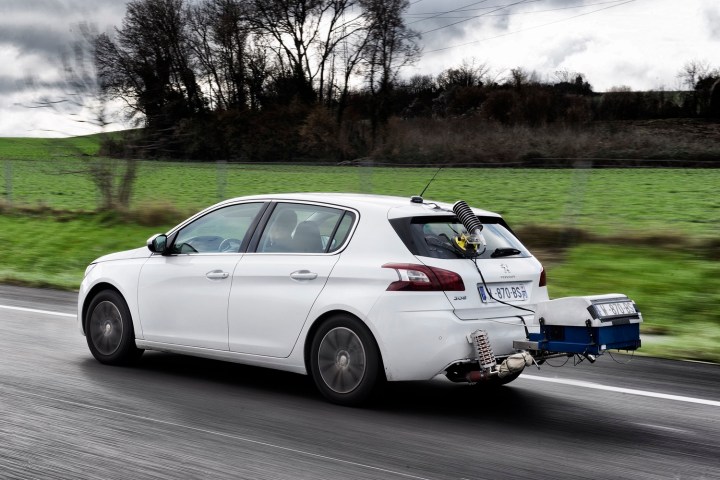
PSA now says real-world fuel economy for the 28 Peugeot, Citroën, and DS models tested was much lower than ratings calculated through the New European Driving Cycle (NEDC), the official fuel-economy testing procedure used in Europe. This seems to confirm years of speculation that the NEDC method is overly optimistic.
The 14 Peugeot models tested averaged 44-percent higher fuel consumption than their official ratings, while fuel consumption for the 11 Citroën models was 39-percent higher. The three DS models in the test averaged 40-percent higher fuel consumption. The test group included multiple versions of some models, to encompass the different powertrains available in those models. Both gasoline and diesel models were included.
Read more: Lawsuit alleges Chevy Cruze Diesel used illegal software
Testing was done on public roads with passengers and luggage onboard, and climate control systems on, according to a PSA statement. Test routes included a mix of urban, rural, and highway driving. PSA used Portable Emissions Management Systems (PEMS), the standard equipment for testing real-world fuel economy and emissions, and the gear used by researchers to uncover Volkswagen’s emissions-cheating “defeat device” software. The tests were conducted in concert with environmental groups Transport & Environment and France Nature Environment, and audited by Bureau Veritas.
PSA admission is another indicator of the limits of laboratory testing, particularly the NEDC. European fuel-economy ratings are almost always higher than U.S. ratings, partly because the NEDC test is shorter and less strenuous than the U.S. EPA test, and partly because the EPA adds “adjustment factors” to the results from its laboratory tests to try to reflect real-world conditions. Legislation that would require carmakers to conduct on-road testing is currently working its way through the European Union bureaucracy.
But issues with laboratory fuel-economy tests aren’t limited to Europe. Both Mitsubishi and Suzuki recently admitted to overstating fuel economy on models they sold in Japan. Mitsubishi said it cheated on tests and was never caught, while Suzuki said its tests were merely inaccurate. In the U.S., Hyundai and Kia were fined $300 million for overstating gas mileage on 13 2011-13 models, but blamed the testing procedure.


